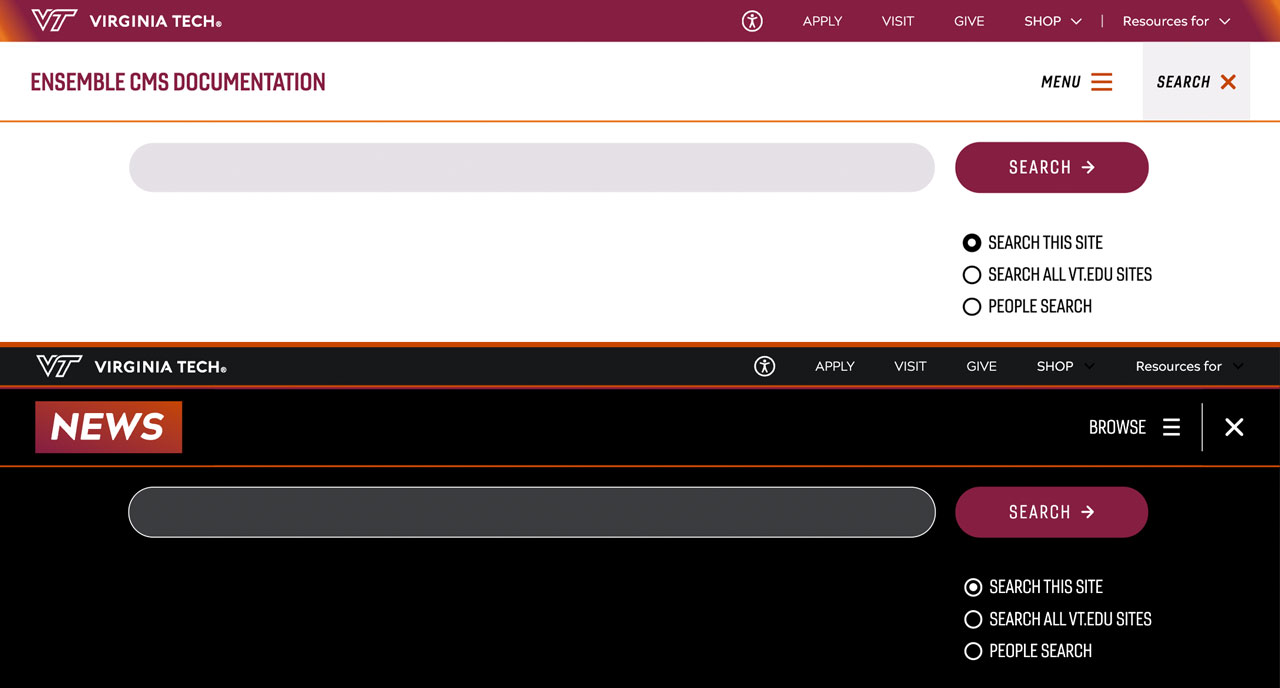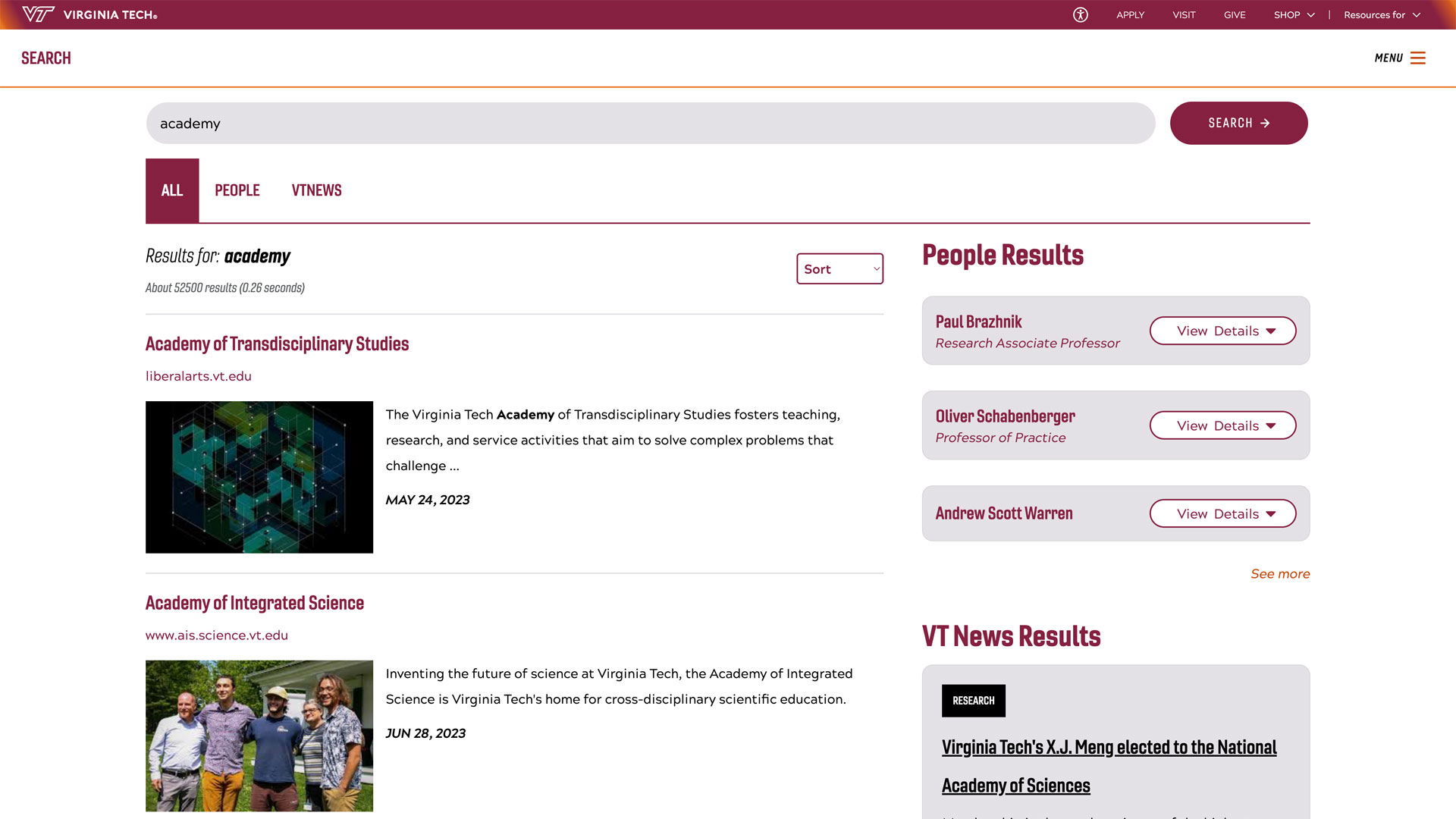TECH Together Campaign announces winners and finalists

We are all facing one of the largest public health challenges of all time - the coronavirus pandemic - and everyone must come together to combat this infectious disease threat that has impacted us locally, nationally, and globally.
As Virginia Tech prepared for an influx of students for the new academic year, two faculty members, Ron Fricker, professor of statistics and an associate dean in the College of Science, and Laura Hungerford, professor and head of the Department of Population Health Sciences, turned to the most innovative and creative people on campus: Virginia Tech students.
The TECH Together Campaign, which launched in July, called upon the creativity and innovation of Virginia Tech students to implement real change, from infrastructure changes to new services, which will not only prevent the spread of COVID-19, but also provide comfort to students and faculty on campus.
The campaign was sponsored by the COVID-19 Rapid Response Seed Fund a joint effort from the Institute for Society, Culture, and Environment; the Institute for Critical Technology and Applied Science; the Fralin Life Sciences Institute; the Institute for Creativity, Arts, and Technology; and the Office of the Vice President for Research.
Fricker and Hungerford, along with a team of judges from the supporting institutes and the COVID-19 modeling group, judged the competition and received a whopping 76 applications from 20 different colleges and departments across the Virginia Tech campus. Of those, 10 finalists and 5 winners have been chosen for their ability to tackle these important challenges with innovative and creative solutions.
“Throughout the competition, the students have been incredibly creative and passionate about how to make the campus as safe as possible,” said Laura Hungerford. “We are so proud of all the competitors who truly embody the spirit of Ut Prosim,” said Ron Fricker.
Winners
Spatial Redesign Graphics
- Joonyoung Kang, Department of Architecture
- Kirat Pandher, Department of Architecture + Construction
- Aki Ishida, Associate Professor, School of Architecture + Design
Forget conventional signage, this team aims to communicate through an immersive spatial experience - 6-foot spaced markings and directional indicators - that will trigger an emotional response, alerting people to be safe and protect their community. The team aims to focus on six key areas: bus stops, sidewalks, crosswalks, path intersections, public spaces, including the Drillfield.
ServeVT
- Whitaker Packwood, Department of Industrial and Systems Engineering
- Annabel Kleinfeldt, Department of Industrial and Systems Engineering
- Henry Forsyth, Department of Computer Engineering
- David Gray, Associate Professor of Practice, Department of Engineering Education
ServeVT is an on-campus delivery service that will provide comfort to those who are uncomfortable entering the dining halls on campus. The volunteer-led service operates through the existing food delivery application Grubhub. Once an order is received, a student volunteer will then pick the food up and deliver it to the appropriate dorm, all while practicing safe, contactless behavior taught through our training course.
Virtual Communities
- Caroline Smith, School of Public and International Affairs
- Courtney Swanson, Department of Psychology
- Theodore Lim, Assistant Professor, Department of Urban Affairs and Planning
Maintaining the “Hokie Community” is crucial to the student experience at Virginia Tech. Virtual Communities hopes to address this by providing a mix of social atmosphere and logistical support communities, particularly aimed at incoming freshmen, transfer students, and international students. Groups of 15-30 students forming these virtual communities will connect over Zoom, an audio and video application that students are already familiar with from classes.
Accessible Face Masks for Deaf and Hard of Hearing
- Ella Rak, Department of Veterinary Medicine, Department of Population Health Sciences
- Jaclyn Abramson, Department of Population Health Sciences
- Connor Herron, Department of Mechanical Engineering
- Teace Markwalter, Department of Population Health Sciences
- Hannah Reed, Department of Population Health Sciences
- Alexander Leonessa, Professor, Department of Mechanical Engineering
- Sophie Wenzel, Assistant Professor of Practice, Department of Population Health Sciences
- Matt Hull, Entrepreneurial, IP, & Business Director of NanoEarth
This pandemic has exacerbated the daily struggle as comprehension and communication with peers is diminished due to masks muffling speech and the ability to read lips. The team is developing a reusable, scalable clear facial covering to prevent viral transmission of SARS CoV-2, while facilitating communication. The team’s interdisciplinary approach will facilitate the rapid development, testing, and distribution of at least 3,000 masks that will improve communication and accommodate individuals with hearing disabilities.
Mobile Testing Clinic
- Amber Douglas, Department of Finance, Insurance, and Business Law
- Prince Wang, Department of Political Science
- Nate Doggett, Department of Electrical Engineering
- David Petrulis, Department of Industrial and Systems Engineering
- Eric Martin, Assistant Professor of Practice, Department of Accounting and Information Systems
With a new semester starting, testing facilities throughout Blacksburg and the New River Valley are bound to receive an overabundance of samples. The team hopes to alleviate stress on testing facilities and keep potentially infected students away from campus facilities with the creation of a sampling vehicle. Their target audience would be Virginia Tech students and faculty who are low risk and wish to secure a negative test result to travel or those that are unsure if they contracted the virus.
Finalists
Maintaining Humanity Through the Mask
- Xandra Jones, Department of Industrial Design
- Grace Ryan, Department of Industrial Design
- Shahab Sagheb, Assistant Collegiate Professor, Department of Industrial Design
In a time where masks cover half of our faces, it is difficult to have authentic human connection through simple interactions like lip reading and smiling as you pass by a stranger on the street. To combat this, the team will design a clear mask that not only allows for maximum visibility, but it also conforms perfectly to one’s face with 3D depth camera modeling. The design also has a N95 hinge and an accordion mechanism, which allows for the mask to “open” and “close” with the mouth, while maintaining a seal that keeps out the virus.
Preventiv
- Sai Gurrapu, Department of Computer Science
- Qasim Wani, Department of Computer Engineering
- Howard Haines, Assistant Professor of Practice, Department of Management
Description: The team is creating an enterprise application that will allow students, faculty, and staff to provide real-time feedback about the availability of essential supplies, such as disinfectants and masks, across campus. In addition to helping with faster response times after the fact, the team will be able to predict future surges in demands and determine where funds and resources need to be efficiently allocated. This solution gives power to an individual to help build a better system for everyone, and all with a single tap on the phone screen.
CoviTrack
- Kashyap Bhatt, Department of Mechanical Engineering
- Aayush Salot, Department of Aerospace and Ocean Engineering
- Aparna Ganesh, Department of Computer Science
- Anchita Hari, Department of Computer Science
- Neel Kanjani, Department of Aerospace and Ocean Engineering
- Suchith Suddala, Department of Computer Science
- Derek Haqq, Graduate Teaching Assistant, Department of Computer Science
In a recent study, it was found out that a minimum of 60 percent of the population needs to use contact tracing to successfully stop the spread of disease. The team is proposing a contact tracing system that will operate through an application with Blacksburg Transit, a bus system that provides public transportation to Virginia Tech students, faculty, and staff, citizens of Blacksburg, and partnering communities within the New River Valley. For users who are not comfortable with providing their email address while registering for the application, will be assigned with an advertising ID as an alternative.
Wastewater Testing
- Abigail Bock, Department of Biomedical Engineering and Mechanics
- Kailee David, Department of Biomedical Engineering and Mechanics
- Harrison Jaehn, Department of Civil and Environmental Engineering
- Carla Finkielstein, Department of Biological Sciences
- Peter Vikesland, Department of Civil and Environmental Engineering
- Amy Pruden, Department of Civil and Environmental Engineering
- Ayella Maile-Moskowitz, Department of Civil and Environmental Engineering
For individuals who are experiencing symptoms or have had positive exposure to an individual with COVID-19, they must utilize nasal pharyngeal testing. But, the current standards and practices for nasal pharyngeal testing are limited in capacity and have a slow turnaround time. Another way that COVID-19 spread can be traced is through the presence and intensity of the viral material within the wastewater of communities. Samples will be taken from 19 sewer sheds once a week, and they will be used as a surveillance measure to give public health officials the opportunity to prepare for a potential influx of COVID-19 cases as well as address potential hotspots for COVID-19 in communities.
VT Check
- Sameer Dandekar, Department of Computer Science
- Nathaniel Salazar, Department of Computer Science
- Chapman Pendery, Department of Computer Science
- Nicholas Polys, Affiliate Research Professor, Department of Computer Science
VT Check is a mobile and web application for Virginia Tech, which allows students and faculty to view and manage occupancies around campus. Doors will be outfitted with minimalistic, non-intrusive Near Field Communication (NFC) tags and QR codes that students and faculty can use to check-in to classrooms, dining halls, and study spaces. These groups will be able to see which rooms are open, restricted, or closed at any given time. This allows students and faculty to plan their days accordingly and avoid overcrowding in hallways.
- Written by Kendall Daniels




